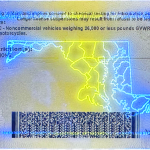In the realm of identity verification, the landscape is constantly evolving. As we approach the year 2025, concerns about fake IDs remain a significant issue across various sectors, from law – enforcement to business operations. Traditional methods of ID verification, such as relying on physical documents like driver’s licenses or passports, have proven to be vulnerable to forgery. This has led to the exploration of more advanced and secure methods, and one of the most promising concepts on the horizon is DNA – based ID verification.
The Problem of Fake IDs in 2025
In 2025, the sophistication of fake ID production has reached new heights. Criminals are using state – of – the – art technology to create counterfeit documents that are increasingly difficult to detect. These fake IDs are used for a variety of illegal activities, including underage drinking, identity theft, and illegal immigration. Law enforcement agencies are constantly on the lookout for these fake IDs, but the traditional methods of verification are no longer sufficient to keep up with the evolving threat.

Businesses are also affected by fake IDs. For example, in the hospitality industry, bars and clubs need to verify the age of their patrons to comply with liquor laws. A fake ID can lead to hefty fines and damage to the business’s reputation. Similarly, in the financial sector, accurate identity verification is crucial to prevent fraud and protect customer accounts. The prevalence of fake IDs in 2025 has made it clear that a more reliable and secure method of ID verification is needed.
DNA – based ID Verification: A Conceptual Overview
DNA – based ID verification is a revolutionary concept that has the potential to transform the way we verify identities. Every individual has a unique DNA sequence, which is like a biological fingerprint. By comparing a person’s DNA sample with a pre – stored reference sample, it is possible to accurately determine their identity.
The process of DNA – based ID verification would likely involve several steps. First, a DNA sample would need to be collected from the individual. This could be done through non – invasive methods such as swabbing the inside of the cheek or collecting a hair sample. The sample would then be analyzed in a laboratory or using a portable DNA analysis device. The genetic markers in the sample would be compared with the reference DNA in a secure database. If there is a match, the individual’s identity is verified.
How DNA – based ID Verification Could Combat Fake IDs
One of the main advantages of DNA – based ID verification in the fight against fake IDs is its high level of accuracy. Since each person’s DNA is unique (except for identical twins), it is extremely difficult to forge. A fake ID that attempts to use someone else’s identity would be quickly detected through DNA analysis. This would provide law enforcement agencies with a powerful tool to identify and prosecute those involved in fake ID production and use.
For businesses, DNA – based ID verification could offer a more secure and efficient way to verify the identities of their customers or employees. For example, in high – security areas such as data centers or government facilities, DNA – based ID verification could replace traditional access control methods. This would ensure that only authorized individuals are granted access, reducing the risk of security breaches caused by fake IDs.
Technical and Ethical Considerations
While DNA – based ID verification holds great promise, there are also several technical and ethical considerations that need to be addressed. From a technical perspective, the accuracy of DNA analysis depends on the quality of the sample and the analytical methods used. Ensuring the reliability of DNA – based ID verification systems will require ongoing research and development to improve the accuracy and speed of DNA analysis.
Ethically, the collection and storage of DNA samples raise concerns about privacy. Individuals may be hesitant to provide their DNA for identity verification purposes, fearing that their genetic information could be misused. Stringent regulations and safeguards would need to be in place to protect the privacy of individuals’ genetic data. This could include strict access controls to DNA databases, anonymization of genetic information, and clear guidelines on how the data can be used and shared.
Implementation Challenges
Implementing DNA – based ID verification on a large scale would also face several practical challenges. One of the main challenges is the cost. DNA analysis is currently a relatively expensive process, and setting up the necessary infrastructure for widespread DNA – based ID verification would require significant investment. This includes the cost of collecting and storing DNA samples, as well as the cost of maintaining and operating DNA analysis laboratories or devices.
Another challenge is public acceptance. Convincing the general public to participate in a DNA – based ID verification system would require effective communication and education about the benefits and safeguards in place. There may also be resistance from some individuals who are concerned about the potential for government overreach or misuse of their genetic information.
Common Problems and Solutions
- Problem: Inaccurate DNA Analysis
Solution: Continuous research and development in the field of DNA analysis are essential. Scientists can work on improving the sensitivity and specificity of DNA testing methods. For example, developing more advanced sequencing technologies that can accurately identify genetic markers even in low – quality samples. Regular calibration and quality control of DNA analysis equipment are also necessary to ensure reliable results.
- Problem: Privacy Concerns
Solution: Governments and organizations implementing DNA – based ID verification need to establish strict privacy regulations. This could include obtaining informed consent from individuals before collecting their DNA samples. Genetic data should be anonymized and stored in highly secure databases with limited access. Clear guidelines should be set regarding the use, storage, and sharing of genetic information, and any violations should be severely punished.
- Problem: High Costs
Solution: As the technology matures, economies of scale may come into play. The government and private sector can invest in research to develop more cost – effective DNA analysis techniques. Additionally, partnerships between different industries can help share the costs of setting up and maintaining the necessary infrastructure. For example, healthcare providers and technology companies could collaborate to develop and implement DNA – based ID verification systems.
- Problem: Public Resistance
Solution: Effective public education campaigns are crucial. These campaigns should clearly communicate the benefits of DNA – based ID verification, such as enhanced security and reduced fraud. They should also address concerns about privacy and data protection. Demonstrating the safeguards in place and involving the public in the decision – making process can help build trust and increase acceptance of the technology.
- Problem: Integration with Existing Systems
Solution: When implementing DNA – based ID verification, it is important to ensure seamless integration with existing identity verification systems. This may require developing standardized data formats and interfaces. For example, DNA – based ID verification could be integrated with existing biometric systems such as fingerprint or facial recognition. This would allow for a more comprehensive and efficient identity verification process.
Fake ID Pricing
unit price: $109
| Order Quantity | Price Per Card |
|---|---|
| 2-3 | $89 |
| 4-9 | $69 |
| 10+ | $66 |



